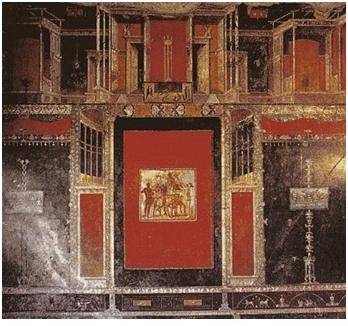
In the early 20th century Art Nouveau gave way to Art Deco. The shift in style and design was heavily influenced by a Russian-born, French artist and designer known as Erté. Born Romain de Tirtoff in St. Petersburg, Russia in 1892, he chose to be known under the pseudonym Erté; how the French pronounced his initials R.T.
Erté thrived in the 20th century. His innovative designs were elegant and sophisticated, and appealed to the popular culture and style of the time. Erté’s versatility as an artist and transitional designs catapulted his career in the 1920's.
November 1929 issue of Harper’s Bazaar
Symphony in Black
Ertè’s designs and unique style were influenced by a childhood fascination with his father’s collection of Persian miniatures. Colorful and exotic with intricate patterns, he was drawn to them. As he developed as an artist, they became his source of inspiration.
Over 200 of his illustrations graced the cover of Harper’s Bazaar magazine between 1915 and 1937 and also appeared in other publications such as Cosmopolitan, Vogue, and Ladies’ Home Journal. His images feature delicate and glamorous women in decorative clothing and style, and showcase Ertè’s appreciation for the graceful, lyrical form of a woman. The most popular of his drawings, Symphony in Black, has been reproduced and copied countless times.
Ertè not only contributed illustrations to the art world, but influenced theatre, film and fashion. He designed sets and extravagant costumes for films and for the stage at such venues as New York’s Radio City Music Hall, the Folies-Bergère in Paris and George White’s Scandals in New York, and for such films as Ben Hur, The Mystic and the silent film, Paris. He also created original fashion designs that were worn by the Hollywood and Broadway elite including, Joan Crawford, Marion Davies, Anna Pavlova and Irène Bordoni.
Besides contributing art for magazines, designs for fashion, theatre stages and film sets, Ertè most importantly influenced the art movement of “Art Deco”, which was revived in the 1960s. Art Deco incorporated interior design and fashion and had a modern style that was defined by glamour and functionality. Everything from art and fashion to furniture and architecture was influenced by Art Deco in the 1920s and 1930s, and Ertè was among the pioneers.
Set design for Machinerie, The Tabarin, Paris, 1948 (left) Pearl of the Orient (right)
Late in his career, he continued to create and designed revues, ballets and operas. He also turned to the mediums of bronze and serigraphy to remake designs of his youth. As an international success, his work can be seen in exhibits and museums all over the world.
 In the early 20th century Art Nouveau gave way to Art Deco. The shift in style and design was heavily influenced by a Russian-born, French artist and designer known as Erté. Born Romain de Tirtoff in St. Petersburg, Russia in 1892, he chose to be known under the pseudonym Erté; how the French pronounced his initials R.T.
In the early 20th century Art Nouveau gave way to Art Deco. The shift in style and design was heavily influenced by a Russian-born, French artist and designer known as Erté. Born Romain de Tirtoff in St. Petersburg, Russia in 1892, he chose to be known under the pseudonym Erté; how the French pronounced his initials R.T.





 Miniature silver deer bust and Bacchantes in bronze.
Miniature silver deer bust and Bacchantes in bronze. Wizard of Oz
Wizard of Oz

 Church of St. Bartholomew
Church of St. Bartholomew








